The average daily growth rate across our measuring farms this week was 29kg DM/ha, which is still around 40% up on the 10-year average.

While the recent dry spell has facilitated good grazing conditions, those on heavier ground have reported that certain areas of their farms remain difficult.
The dry conditions are set to continue this weekend in the north, east and south. Around 15mm of rain is forecast for the west across Sunday and Monday. Moving into November, conditions are set to be good across the country early in the month.
Remember that we should be actively closing up ground for the spring at this point. Even though growth remains very good and paddocks grazed earlier in the month might seem to be coming back strong, resist the urge and leave the gates closed. It’ll be worth more in the spring.
Exceptions could possibly be made where a huge closing cover is recorded and where paddocks in question are not the ones grazed first in the springtime. By 1 November, 60% of a farm should be closed. At recent grass walks, Teagasc specialists Karen Dukelow, Alan Dillon and Mike Egan demonstrated that each additional day at grass in the autumn represented
an extra €1.80 in farmers’ pockets, with each additional grazing day in the spring worth €2.70.
Mike Egan told the Irish Farmers Journal that it is not too late to begin planning for spring grazing now, even on farms that haven’t been actively closing up paddocks.
Listen to our conversation with Mike Egan in the podcast below:
Listen to "Discussing grassland management in Co Tipperary" on Spreaker.
In brief
Growth rate 29kg DM/ha/day.15mm of rain forecast in the west this weekend.Early November dry.Aim for 60% closed up for spring by 1 November.Saving of €1.80 daily in autumn for every extra day at grass.Saving of €2.70 daily in spring for every extra day at grass.
Billy Glasheen
Co Tipperary
We’re currently running at a stocking rate of 2.29 LU/ha. Daily grass demand is 33kg DM/ha and we’re growing 49kg DM/ha daily at the moment.
I know that the target for an autumn planner is to have 60% of a farm closed by 1 November, but I estimate that I’ll have 87% of mine closed at that point.
My thinking is that it’ll be worth 10 times more to me in the spring. I achieve weight gains of 1kg daily on my cattle (dairy X beef) between March and July. Growth at the moment is half that. The worst of my silage is 70% DMD – I’ll be able to store cattle on that alone over the winter.
Teagasc specialists at my farm walk this week showed how it’s worth €1.80 extra every day that cattle are out grazing in the back-end and €2.70 in the spring. I’m targeting the spring to cash in on grass-to-beef conversion.
Even if a cold winter does come, an absolute maximum of 20% of the grass will be lost through frost damage.
Liam McWeeney
Derrypatrick Herd, Co Meath
We have 50% of the farm closed up as of today. That’s slightly behind where we need to be, being a wet farm by nature, but I suppose that the ideal ground conditions and big grass supply are lending themselves to what will hopefully be a relatively long season.
Calves were castrated last week, with no residual problems, and we began to wean this week. Cows and calves are in groups of 25, and we took one-third of cows out of these groups on Tuesday. They go into the shed on our poorest silage and straw.
We’ll take another third out on Friday. There’s a bit of bawling – mostly from the cow end though.
The final Angus cattle will be killed from grass this week. They’ve been on 4kg of meal since 5 September. Some of our Charolais stock will get away from grass too. While they could be pushed on in the shed, it makes sense to get as many as possible away from grass with the low beef price. We’re killing based on weight and visual cover – looking for 610kg of liveweight.
David Mitchell
Co Monaghan
Our land is wet by nature. Although rain has been scarce here recently – just 3mm fell over the weekend – wet parts of the farm remain difficult.
Having said that, we’d have the full complement indoors by now in a typical year, so I’m not complaining. All of the spring calves are still out; half of these are weaned and the others remain suckling. Eight freshly calved autumn calvers are out, as are some dry cows and the in-calf heifers.
Grass is disappearing fast, and I have ewes to think about. All cattle will probably be indoors by the end of next week, so as to keep grass for my sheep until December.
We got farmyard manure out on Saturday. Bullocks have been in for a fortnight and on 4kg of meal at the moment.
In the coming days, I’ll weigh them and dose for worms and lice with an ivermectin-based pour-on product. I’ll treat them for mature fluke in a few weeks’ time.
Joe Murray
Co Roscommon
Even though the weather has been good, the ground beneath our feet remains slightly difficult. Grass is almost gone on two of our three outfarms. At home there is a decent supply ahead of stock, but this land is our wettest – you can’t win.
I sold 22 yearlings in the yard last week and was quite happy. They were 450kg and went at €1,070. Selling in the yard is great – had I sold them for €1,100 in the mart, I still don’t think it would’ve been worth my while.
Between weight loss and fees, I did better at home. They had been on 4kg of meal for around five weeks. Eight of their comrades remain.
I’ll dose young calves for worms and vaccinate with an intra-nasal product for pneumonia, as they hit the house next week.
I was lucky in that I got all of my slurry out prior to the deadline. Though my tanks were relatively empty, you have to be going into winter with full slurry capacity in these parts.
Read more
Grass+ dairy: superb conditions for autumn grazing
The average daily growth rate across our measuring farms this week was 29kg DM/ha, which is still around 40% up on the 10-year average.

While the recent dry spell has facilitated good grazing conditions, those on heavier ground have reported that certain areas of their farms remain difficult.
The dry conditions are set to continue this weekend in the north, east and south. Around 15mm of rain is forecast for the west across Sunday and Monday. Moving into November, conditions are set to be good across the country early in the month.
Remember that we should be actively closing up ground for the spring at this point. Even though growth remains very good and paddocks grazed earlier in the month might seem to be coming back strong, resist the urge and leave the gates closed. It’ll be worth more in the spring.
Exceptions could possibly be made where a huge closing cover is recorded and where paddocks in question are not the ones grazed first in the springtime. By 1 November, 60% of a farm should be closed. At recent grass walks, Teagasc specialists Karen Dukelow, Alan Dillon and Mike Egan demonstrated that each additional day at grass in the autumn represented
an extra €1.80 in farmers’ pockets, with each additional grazing day in the spring worth €2.70.
Mike Egan told the Irish Farmers Journal that it is not too late to begin planning for spring grazing now, even on farms that haven’t been actively closing up paddocks.
Listen to our conversation with Mike Egan in the podcast below:
Listen to "Discussing grassland management in Co Tipperary" on Spreaker.
In brief
Growth rate 29kg DM/ha/day.15mm of rain forecast in the west this weekend.Early November dry.Aim for 60% closed up for spring by 1 November.Saving of €1.80 daily in autumn for every extra day at grass.Saving of €2.70 daily in spring for every extra day at grass.
Billy Glasheen
Co Tipperary
We’re currently running at a stocking rate of 2.29 LU/ha. Daily grass demand is 33kg DM/ha and we’re growing 49kg DM/ha daily at the moment.
I know that the target for an autumn planner is to have 60% of a farm closed by 1 November, but I estimate that I’ll have 87% of mine closed at that point.
My thinking is that it’ll be worth 10 times more to me in the spring. I achieve weight gains of 1kg daily on my cattle (dairy X beef) between March and July. Growth at the moment is half that. The worst of my silage is 70% DMD – I’ll be able to store cattle on that alone over the winter.
Teagasc specialists at my farm walk this week showed how it’s worth €1.80 extra every day that cattle are out grazing in the back-end and €2.70 in the spring. I’m targeting the spring to cash in on grass-to-beef conversion.
Even if a cold winter does come, an absolute maximum of 20% of the grass will be lost through frost damage.
Liam McWeeney
Derrypatrick Herd, Co Meath
We have 50% of the farm closed up as of today. That’s slightly behind where we need to be, being a wet farm by nature, but I suppose that the ideal ground conditions and big grass supply are lending themselves to what will hopefully be a relatively long season.
Calves were castrated last week, with no residual problems, and we began to wean this week. Cows and calves are in groups of 25, and we took one-third of cows out of these groups on Tuesday. They go into the shed on our poorest silage and straw.
We’ll take another third out on Friday. There’s a bit of bawling – mostly from the cow end though.
The final Angus cattle will be killed from grass this week. They’ve been on 4kg of meal since 5 September. Some of our Charolais stock will get away from grass too. While they could be pushed on in the shed, it makes sense to get as many as possible away from grass with the low beef price. We’re killing based on weight and visual cover – looking for 610kg of liveweight.
David Mitchell
Co Monaghan
Our land is wet by nature. Although rain has been scarce here recently – just 3mm fell over the weekend – wet parts of the farm remain difficult.
Having said that, we’d have the full complement indoors by now in a typical year, so I’m not complaining. All of the spring calves are still out; half of these are weaned and the others remain suckling. Eight freshly calved autumn calvers are out, as are some dry cows and the in-calf heifers.
Grass is disappearing fast, and I have ewes to think about. All cattle will probably be indoors by the end of next week, so as to keep grass for my sheep until December.
We got farmyard manure out on Saturday. Bullocks have been in for a fortnight and on 4kg of meal at the moment.
In the coming days, I’ll weigh them and dose for worms and lice with an ivermectin-based pour-on product. I’ll treat them for mature fluke in a few weeks’ time.
Joe Murray
Co Roscommon
Even though the weather has been good, the ground beneath our feet remains slightly difficult. Grass is almost gone on two of our three outfarms. At home there is a decent supply ahead of stock, but this land is our wettest – you can’t win.
I sold 22 yearlings in the yard last week and was quite happy. They were 450kg and went at €1,070. Selling in the yard is great – had I sold them for €1,100 in the mart, I still don’t think it would’ve been worth my while.
Between weight loss and fees, I did better at home. They had been on 4kg of meal for around five weeks. Eight of their comrades remain.
I’ll dose young calves for worms and vaccinate with an intra-nasal product for pneumonia, as they hit the house next week.
I was lucky in that I got all of my slurry out prior to the deadline. Though my tanks were relatively empty, you have to be going into winter with full slurry capacity in these parts.
Read more
Grass+ dairy: superb conditions for autumn grazing







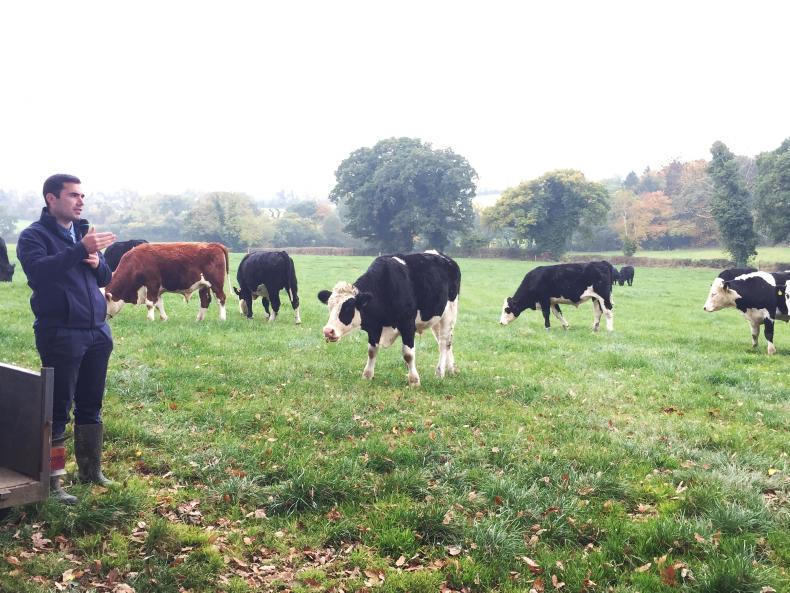
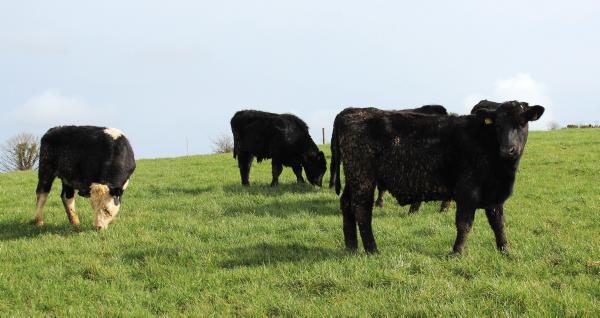

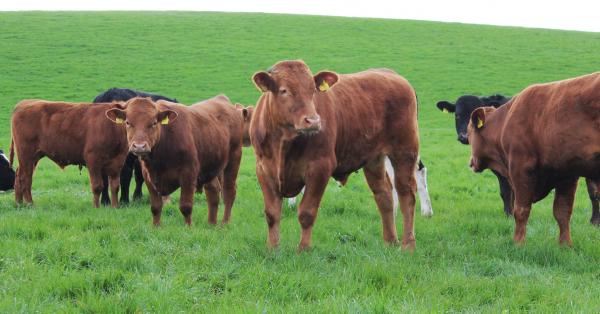
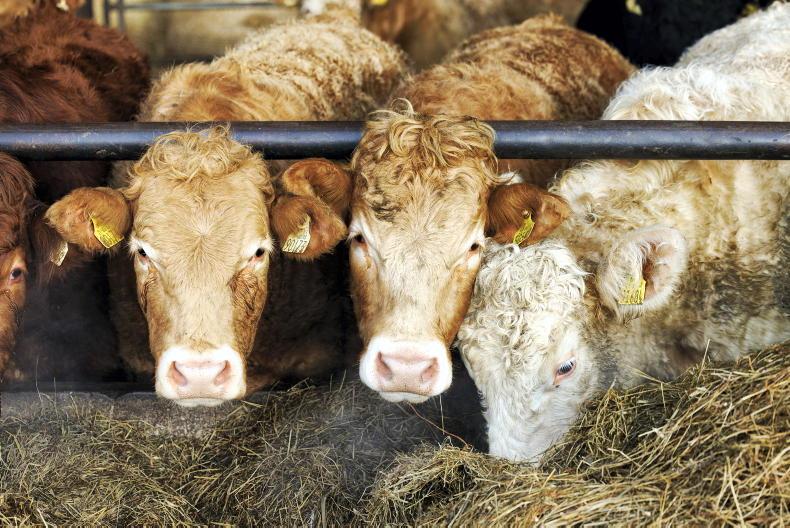
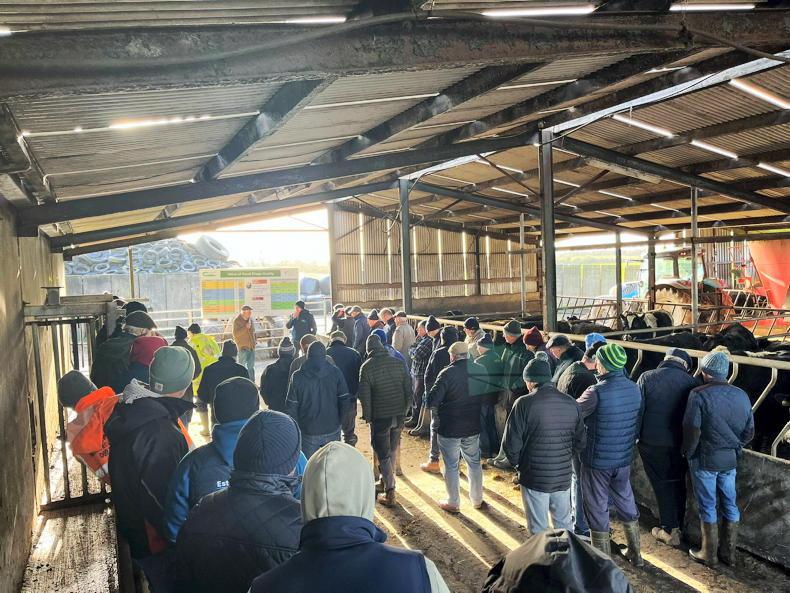
SHARING OPTIONS